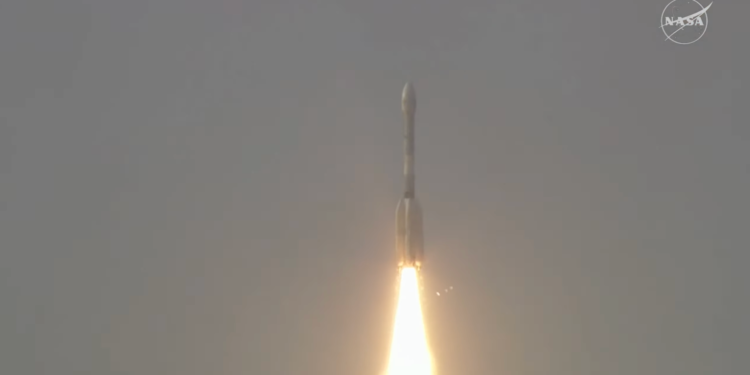New Delhi- India’s space journey reached a new milestone with the successful launch of the NASA-ISRO Synthetic Aperture Radar (NISAR) satellite from the Satish Dhawan Space Centre in Sriharikota. The mission, a collaborative effort between India’s ISRO and the United States’ NASA, has been hailed as a transformative leap in Earth observation technology, promising to revolutionize how we monitor and manage natural and human-made systems on a global scale.
Although held up in New Delhi due to parliamentary commitments, Union Minister Dr. Jitendra Singh, who oversees the Science and Technology, Earth Sciences, and Space departments, joined scientists at the CSIR Auditorium to witness the launch via live telecast. He congratulated the ISRO and NASA teams, calling the mission a global benchmark in space collaboration and a symbol of scientific diplomacy between the world’s two largest democracies.
NISAR is the first satellite of its kind to carry dual-frequency synthetic aperture radars—NASA’s L-band and ISRO’s S-band—on a single platform. Launched aboard India’s GSLV-F16 rocket, this is also the first time a GSLV vehicle successfully placed a satellite in a Sun-synchronous Polar Orbit, signaling India’s advancing capability in space technology. Weighing 2,393 kilograms, NISAR has been inserted into a 747-kilometre orbit and is expected to operate for at least five years.
The satellite is designed to provide high-resolution, all-weather, day-and-night imaging of Earth’s land, ice, and coastal surfaces. It will revisit each location every 12 days, enabling close monitoring of environmental changes, natural disasters, and anthropogenic impacts. Its applications range from earthquake and volcano monitoring to glacier tracking, agriculture, forest mapping, and resource management.
Dr. Jitendra Singh emphasized that NISAR’s value extends far beyond science labs and research centres. Its data will support practical decision-making across critical sectors like aviation safety, maritime navigation, urban infrastructure, and coastal management. The satellite will form a backbone for more intelligent and responsive planning, including safer flight paths, efficient shipping routes, and climate-resilient urban development.
Built using ISRO’s I-3K spacecraft bus, the satellite is a fine example of technological synergy. NASA provided key components including the L-band radar, GPS systems, high-speed communication modules, a solid-state recorder, and a 12-meter deployable antenna. ISRO contributed the S-band radar, spacecraft structure, and launch systems. The mission’s total cost is estimated at over \$1.5 billion, shared by both agencies.
What makes NISAR especially unique is its open-data policy. The mission is committed to making its rich stream of Earth observation data accessible not just to scientists and governments, but also to disaster response teams, developing nations, and climate-focused organizations across the globe. This move aligns with India’s broader vision of making space technologies more inclusive and globally impactful.
Reflecting on the growing evolution of India’s space programme, Dr. Singh noted that under the leadership of Prime Minister Narendra Modi, India is now moving from utility-driven space missions to initiatives rooted in knowledge, innovation, and global cooperation. He added that with missions like Chandrayaan and now NISAR, India is launching not just satellites, but new opportunities for sustainable development and shared progress.






